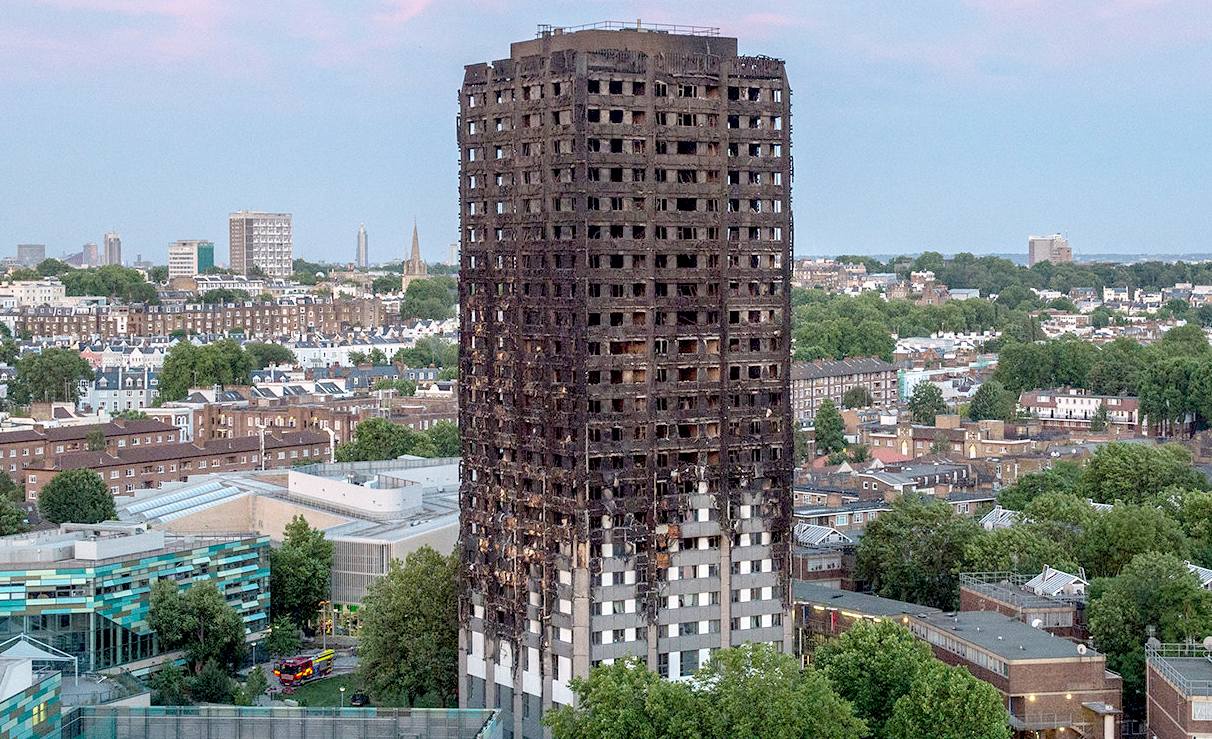
A
BUM DEAL - The residents tried to tell Kensington and Chelsea,
but the council were not listening to anything other that how to milk
their constituents for more money to sqaunder.
The 24-storey tower block was designed in 1967
by Clifford Wearden and Associates, with the Kensington and Chelsea London Borough Council
(KCLBC) approving its construction in 1970, as part of phase one of the Lancaster West redevelopment
project.
The 67.3 m (221 ft) tall building contained 120 one and two-bedroom flats (six dwellings per floor on twenty of the twenty-four storeys.
In many ways Grenfell is comparable to the Hillsborough stadium disaster, and just as Hillsborough led to major precedents regarding psychiatric harm (see Alcock v Chief Constable of South Yorkshire [1991]) and end-of-life decisions (see Airedale NHS Trust v Bland [1993]), Grenfell may be a test case for numerous areas of the law
concerning corporate manslaughter.
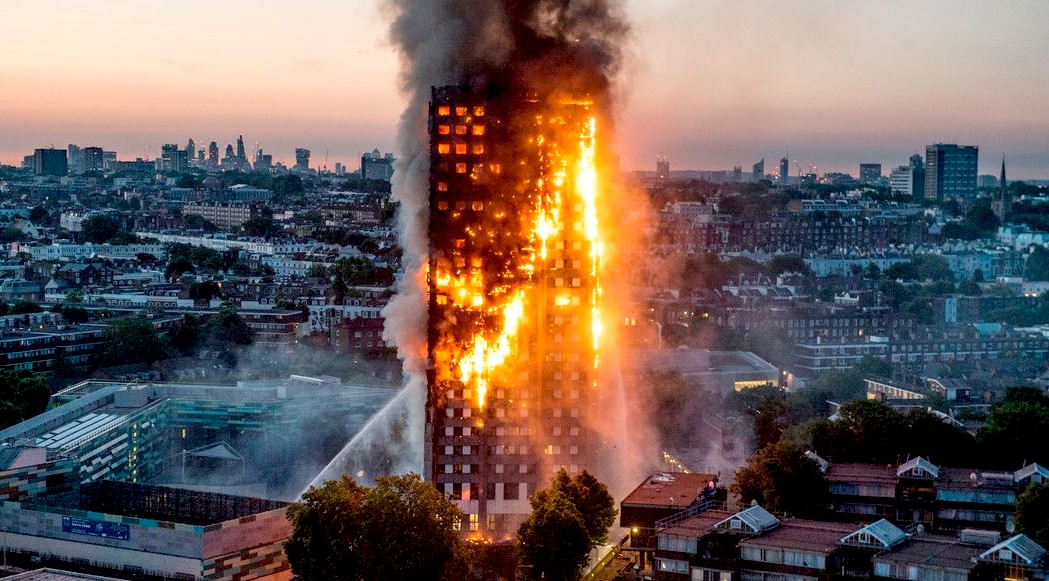
....
A fire broke out on 14 June 2017, which killed 72 of Grenfell's residents. Emergency services received the first report of the fire at 00:54 local time. It burned for around 24 hours. Initially, hundreds of firefighters and 45 fire engines were involved in efforts to control the fire, with many firefighters continuing to attempt to control pockets of fire on the higher floors after most of the rest of the building had been gutted.
FIRE
SAFETY BILL
New checks on homes since the Grenfell Tower fire in
London, have laid bare decades of poor building practices and defective materials. This has left at least 3 million people across the UK living in homes which are deemed unsafe. With developers, insurers and owners having gone into bankruptcy or refusing to take responsibility, leaseholders have been left to cover the cost of remediation. Nationally, this could be as much as £16 billion or an average of £50,000 per householder.
Amongst those in this situation are 66 leaseholders from the Landmark apartment complex on Bexhill seafront.
Huw
Merriman MP has raised their plight in Parliament when calling for the Government to force the building industry to set up a levy to repay the cost of repairs.
The MP for Herstmonceux and Battle has tabled an amendment to the forthcoming Fire Safety Bill. If passed, the amendment would ensure that leaseholders could not be charged.
Huw Merriman is quoted as saying: “If someone is unfortunate to buy a car, and it was found not to be safe when it was sold, the manufacturers would have to fix it or replace it. The same recompense should be provided by those responsible for selling new homes which were nowhere near the standards expected of them.
“Builders, developers, the mortgage industry and those involved in the design and sale of these properties should be required to pay up. It is not conceivable that they will have the cash reserves to do so immediately so the taxpayer will have to front-up and then get reimbursed by an industry levy. Residents from the Landmark, in Bexhill, have been put in an intolerable situation. We cannot continue with unsafe properties being occupied by residents paying huge sums on temporary ‘waking watch’ fire patrols and high insurance premiums. These residents are scared to live in their homes, unable to cover the cost of repairs and unable to sell without a vast financial loss.
“This is a national scandal and requires a national solution. I will continue to fight on in Parliament for the residents in the Landmark, and all other residents in a similar plight across the country. It should not need to come to a vote because the Government has agreed, in principle only at this stage, that leaseholders should not have to pay. The fund made available by the Government is only a fraction of the total cost. This fund should be enlarged and ultimately paid for by the industry responsible, not be every other taxpayer. Now is the time for a resolution to be found and for these repairs immediately carried out.”
The MP’s stance comes following a previous campaign to help a group of elderly residents of shared living accommodation who were facing were large financial outlays from faulty design. Commenting on the need for wider reform,
Merriman said: “Leaseholders in this country lack basic protections and are often ripped off by those above them in the contract hierarchy. This is no good for the market or for the consumer. Change is long overdue.”
The
same protections should be afforded anyone buying a home on the feed
slope to Lime Well. It is the responsibility of the developers and
Wealden District Council to ensure that potential home owners will not
have to foot the bill or face prosecutions for groundwater pollution.
GRENFELL ACTION GROUP (GAG)
In January 2016, GAG warned that people might be trapped in the building if a fire broke out, pointing out that the building had only one entrance and exit, and corridors that were allowed to fill with rubbish, such as old mattresses.
GAG published an online article attacking KCLBC
as an "evil, unprincipled, mini-mafia" and accusing the council of ignoring health and safety laws. In the blog post, they warned that "only a catastrophic event" would "expose the ineptitude and incompetence of
[KCLBC]" and "bring an end to the dangerous living conditions and neglect of health and safety legislation" at the building, adding, "[We] predict that it won't be long before the words of this blog come back to haunt the
KCLBC
management and we will do everything in our power to ensure that those in authority know how long and how appallingly our landlord has ignored their responsibility to ensure the health and safety of their tenants and leaseholders. They can't say that they haven't been warned!"
How
right they were.
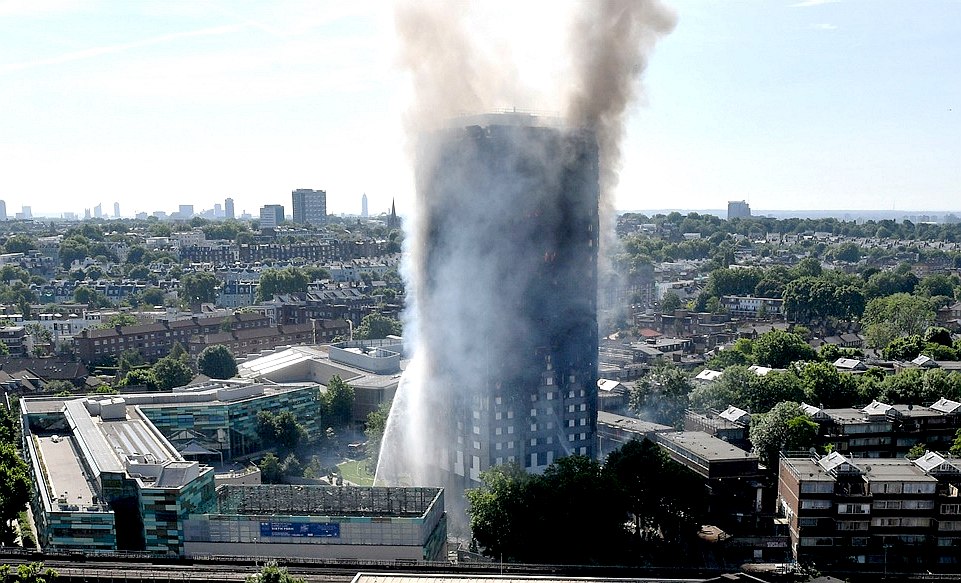
BBC NEWS
The fire which destroyed Grenfell Tower in June 2017 was one of the UK's worst modern disasters.
Just before 01:00 on 14 June, fire broke out in the kitchen of a fourth floor flat.
The fire began "in or around" a Hotpoint fridge-freezer in flat 16 on the fourth floor, according to a provisional report by Dr Niamh Nic Daéid, director of the Leverhulme Research Centre for Forensic Science at Dundee University.
Her report contains extracts from a witness statement by flat occupant Behailu Kebede, who described being woken by the sound of a smoke alarm.
He went into the kitchen and saw smoke in the area of the fridge-freezer and near the kitchen window.
Mr Kebede immediately called the fire brigade, which logged the call at 00:54. Four fire engines were sent to the scene, the first arriving at 00:59.
The first fire crew entered the flat at 01:07 - an approximate timing taken from a thermal imaging camera. They initially searched the bedrooms and did not enter the kitchen until 01:14.
In the kitchen, firefighter Daniel Brown described seeing an "isolated curtain of flame from about 2-3 feet in the air to the ceiling".
As the fire crew dealt with the fire in the fridge-freezer, their thermal images also appear to show falling embers outside the kitchen window.
Mobile phone images taken by Mr Kebede from outside Grenfell Tower approximately 11 minutes after his first 999 call show an orange glow of flames around the kitchen window, and later a fire burning more intensely in the area of the window filler panel and extractor fan.
Subsequent photos by Mr Kebede suggest that the "fire was continuing to develop and grow", Dr Nic Daéid reports, by 01:09 becoming "external to the building".
Although the timings provided are approximate, it appears that the fire had spread to the cladding before the firefighters had entered the kitchen.
Dr Nic Daéid's provisional report also identifies "unknown materials" stored between the freezer and wall which "may have become involved in the fire in the early stages of its development".
Among these materials was an item described as an "electric cooking device" or "large hot plate".
In another report, fire expert Professor Luke Bisby expressed his view that the likely reason for the fire spreading beyond the kitchen was that flame and hot gases penetrated the internal window frame.
From the fourth floor, the fire spread rapidly upwards and across the eastern side of the building. From there, it spread across the north face of the tower.
Mobile phone videos show the blaze reaching the top floor on the east side of Grenfell Tower by about 01:26, less than 30 minutes after firefighters had arrived.
In a report to the Grenfell Public Inquiry, fire safety engineer Dr Barbara Lane identified the fire spreading vertically up the tower columns, and "laterally along the cladding above and below the window lines (and) the panels between windows."
At 02:06, London Fire Brigade declared the fire a "major incident". At this point, some 40 fire engines were either at or en route to the scene.
Grenfell Tower had a 'stay put' fire policy - essentially, the building design would contain a fire in a single flat for as long as it took fire crews to bring it under control.
So on the night, many residents were told to remain in their flats by the emergency services, only to become trapped as the fire blazed out of control and thick poisonous smoke spread up the single narrow stairwell.
Dr Lane said that the stay put policy had "substantially failed" by 01:26 - less than 30 minutes after the first firefighters were at the scene.
Some people ignored the stay put advice and made it down the stairs to safety.
Other residents went upwards and sought refuge in flats of friends and neighbours on the upper floors. Twenty-four people died on the top floor of the tower block.
Counsel to the Grenfell inquiry Richard Millet QC told the 4 June 2018 hearing that 144 people managed to evacuate before 01:38, but only 36 after the stay put guidance was abandoned.
By 02:51, the fire had reached the western side. At this point, some 63 flats were on fire and more than 100 people remained in the building.
At 04:30 the whole building was engulfed, with more than 100 flats on fire.
The blaze did not burn itself out until 01:14 BST on Thursday - 24 hours later.
The most significant part of the renovation of Grenfell Tower was the addition of external cladding. This consisted of aluminium sheets bonded to a central plastic (polyethylene) core.
In his report to the public inquiry, Professor Luke Bisby said evidence "strongly supports" the theory that the polyethylene material in the cladding was the primary cause of the fire's spread.
"The ACM (aluminium composite material) product on Grenfell Tower incorporates a highly combustible polyethylene polymer filler which melts, drips, and flows at elevated temperature. The polyethylene filler material is expected to release large amounts of energy during combustion".
The Grenfell Inquiry has also heard that the building's smoke extraction system was not working, and that firefighters experienced problems with the
water supply because there was no 'wet riser' - a water-filled pipe running up the building to be used in the event of fire.
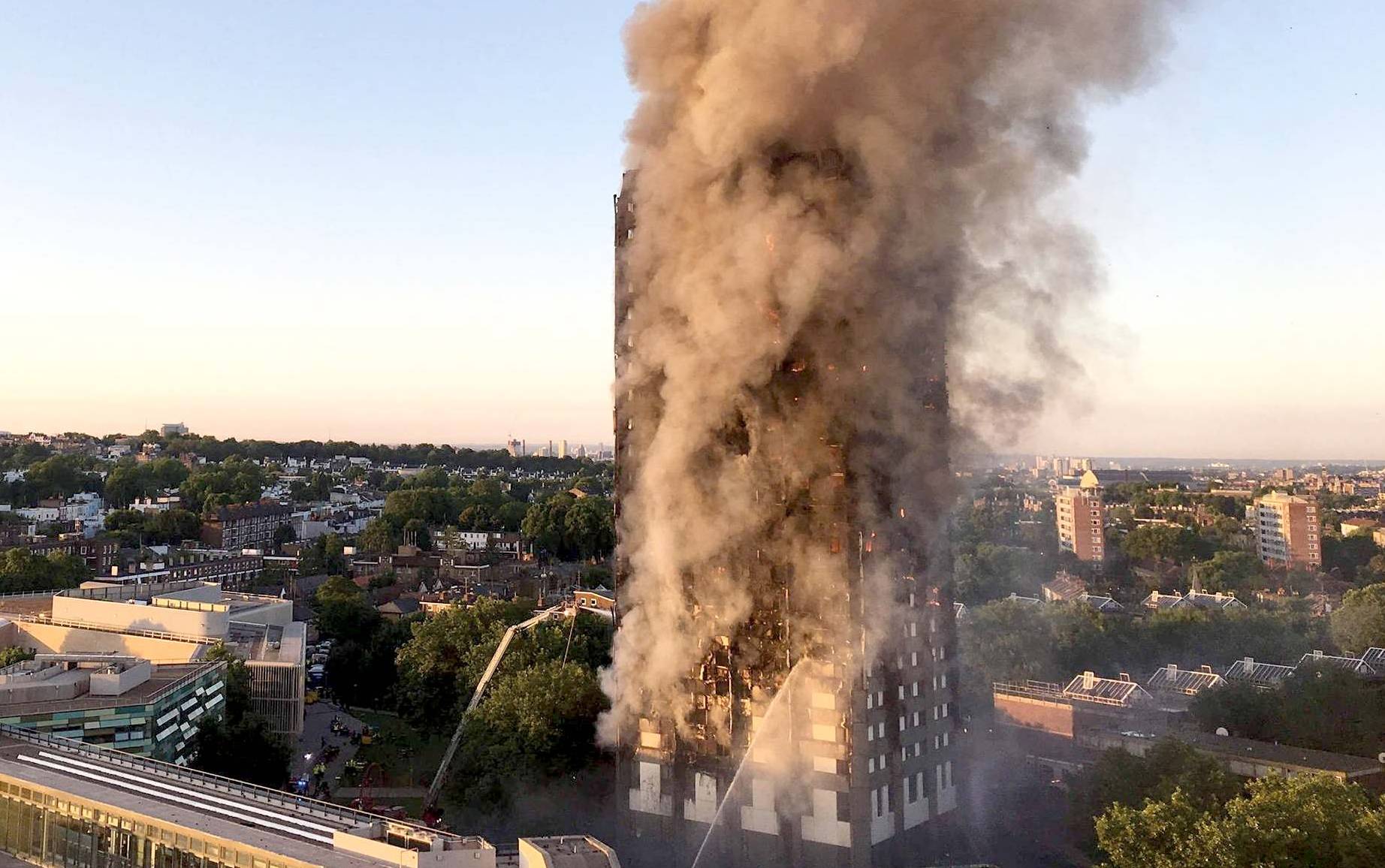
INVESTIGATION
After the fire a massive search and recovery operation led by the Met, City of London and British Transport Police began immediately.
Specially trained officers thoroughly searched every single flat, examining some 15.5 tonnes of debris on each floor, helped by forensic anthropologists, archaeologists and forensic dentists or odontologists.
The Met Police are looking into offences including manslaughter, corporate manslaughter, misconduct in public office and breaches of fire safety regulations in relation to the fire.
The force has already gathered 31 million documents and 2,500 physical exhibits. Some 1,144 witnesses have given statements and 383 companies are part of the investigation.

Negligence
that is premeditated, or a calculated risk, should in our view be
treated as murder, or at the very least as a conspiracy to abandon a
statutory duty of care. Hence, should carry a life sentence. Especially
where the culprits are warned and fail to action the appropriate remedy.
Profitability is not something that should compromise safety.
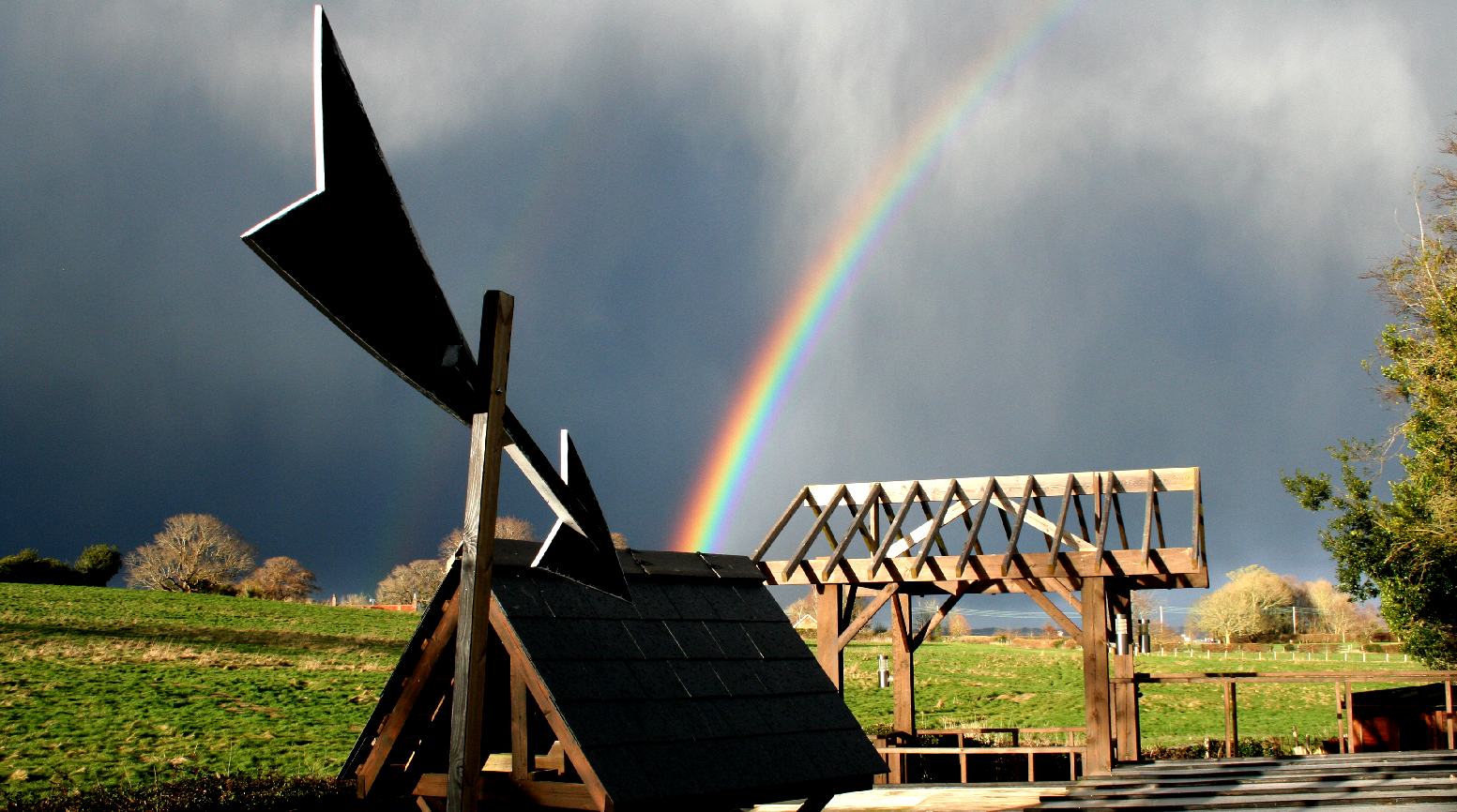
POISONING
WATER SUPPLIES - The
well adjacent to a proposed development site just outside the village of
Herstmonceux will suffer contamination with toxins harmful to humans if this development proceeds. Latimer, Clarion and
Wealden
District Council have not
taken suitable precautions to preserve this valuable asset for the
occupiers of the old generating buildings. Bioaccumulation is likely to
see the well become more poisonous if dwellings have gardens and
pesticides and herbicides are used, to include hydrocarbon build up,
where hydrocarbons are known to be carcinogenic.
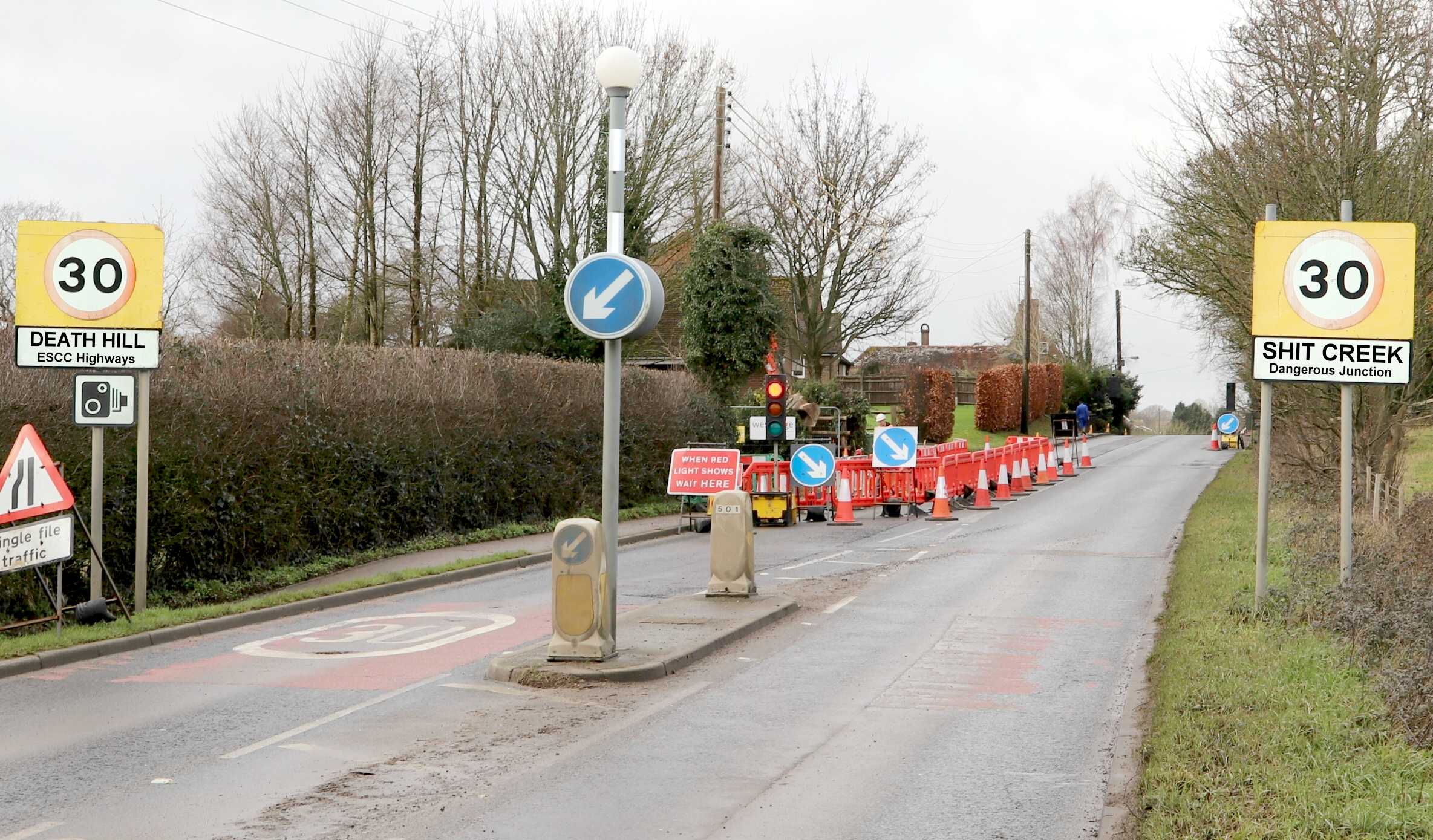
A
BUM DEAL - An accident hot spot in the making. This is called Suicide
Junction by locals, who are understandably concerned at what is
happening on their doorstep.
..
LINKS
& REFERENCE
https://www.bbc.co.uk/news/uk-40301289
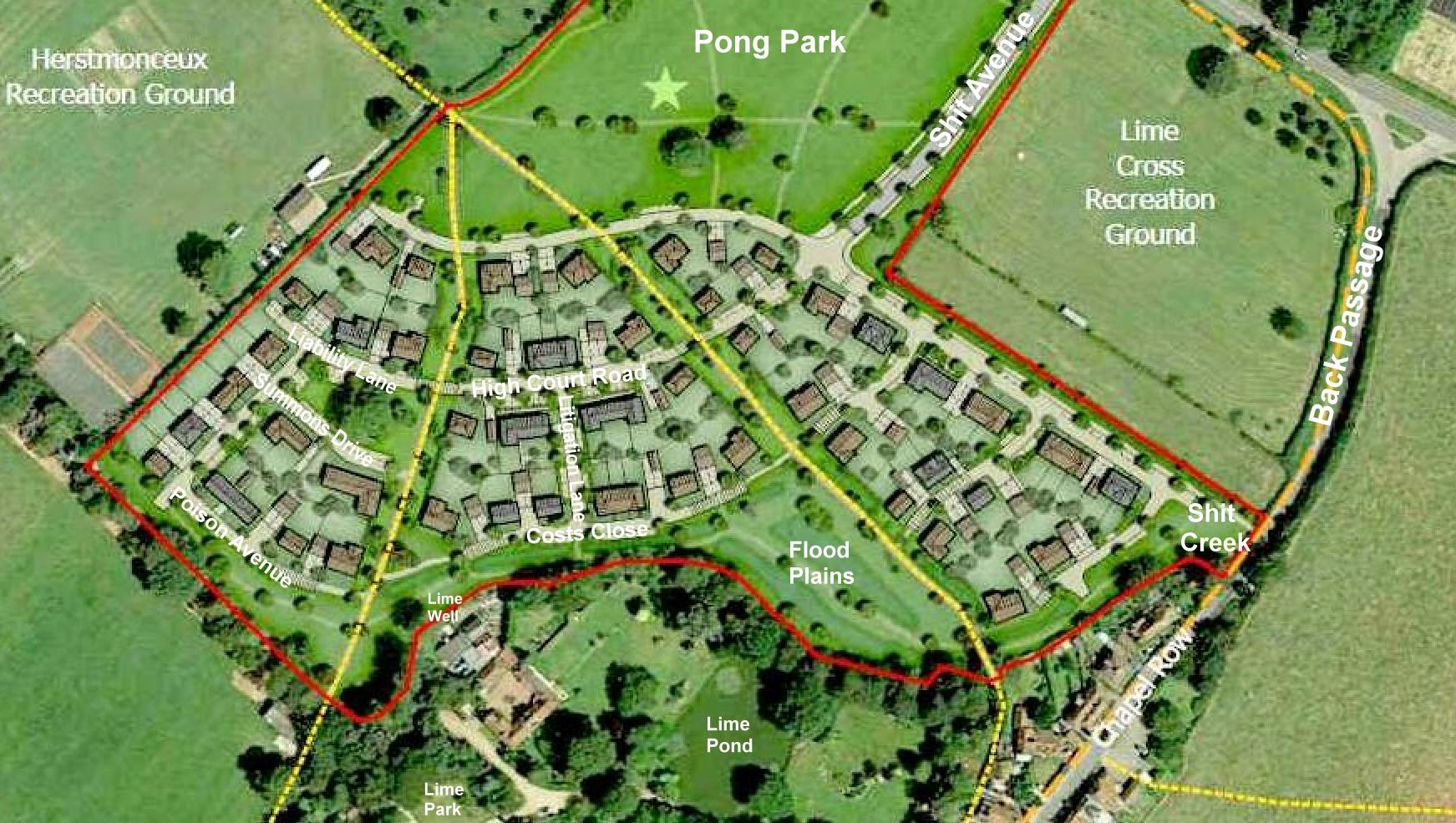
COUNTRYSIDE
ABOMINATION & HUMAN RIGHTS VIOLATIONS -
If you buy one of these (proposed) houses, not only will you be adding
to global warming, but you could be letting yourself in for many years
of litigation, not least of which is the potential to be charged under
groundwater contamination laws. At least 40% of the houses shown in the
above plan are in a
direct line to poison the only working well in the village - Lime
Well - in the
lower left of the picture. The developers will also fall foul of the Human
Rights Act 1998, for interfering with the peaceful enjoyment of a water
supply.







